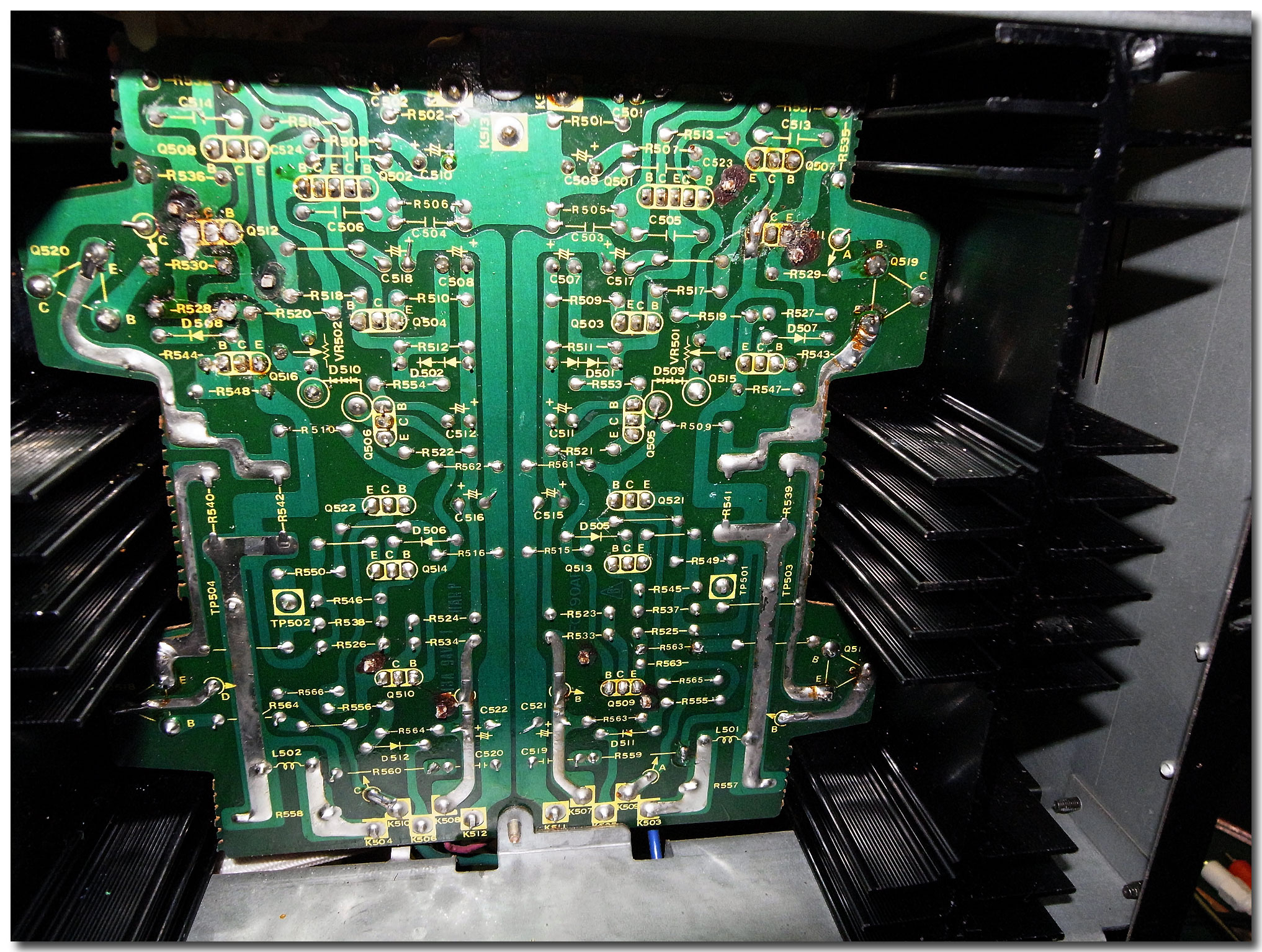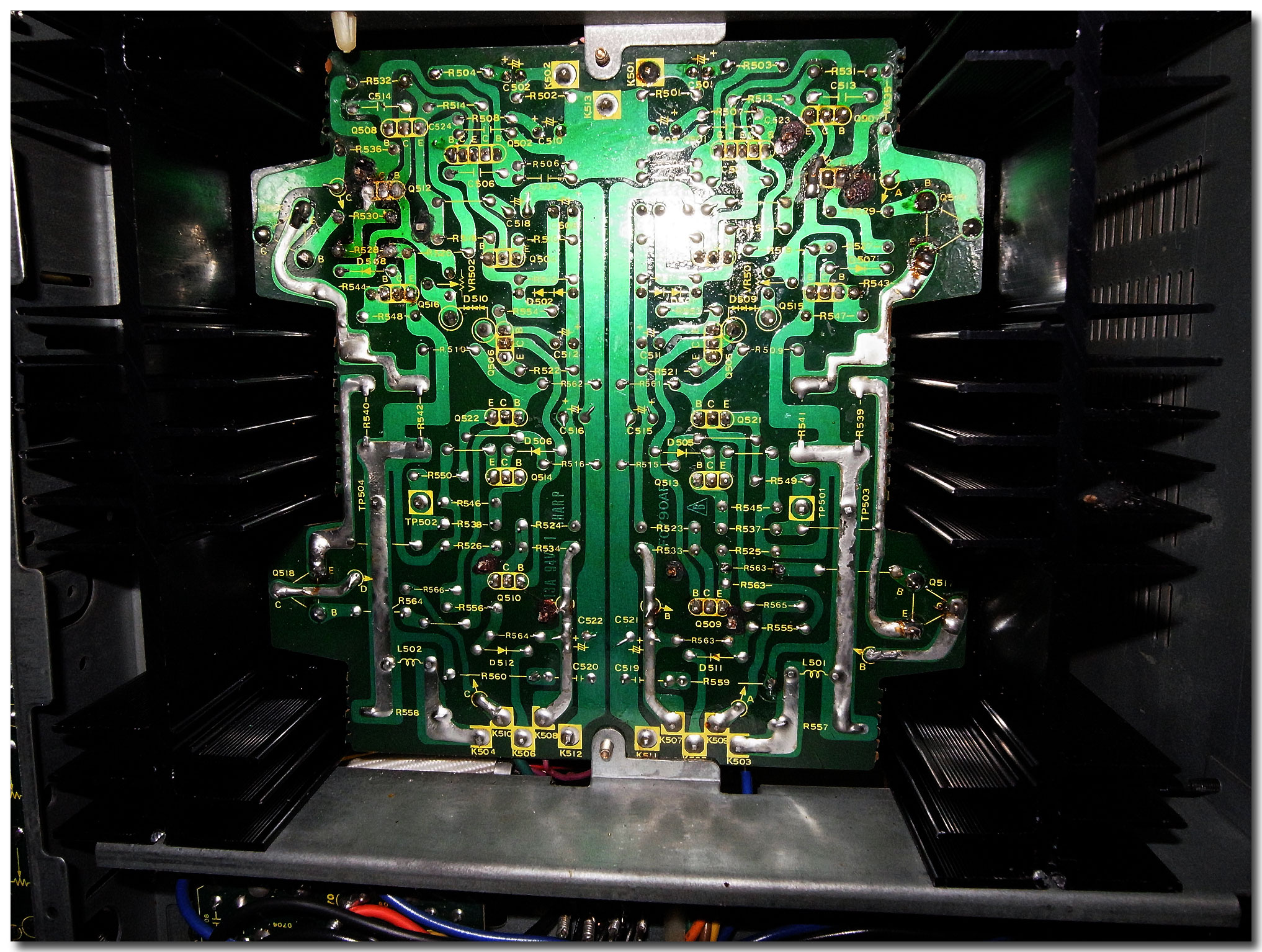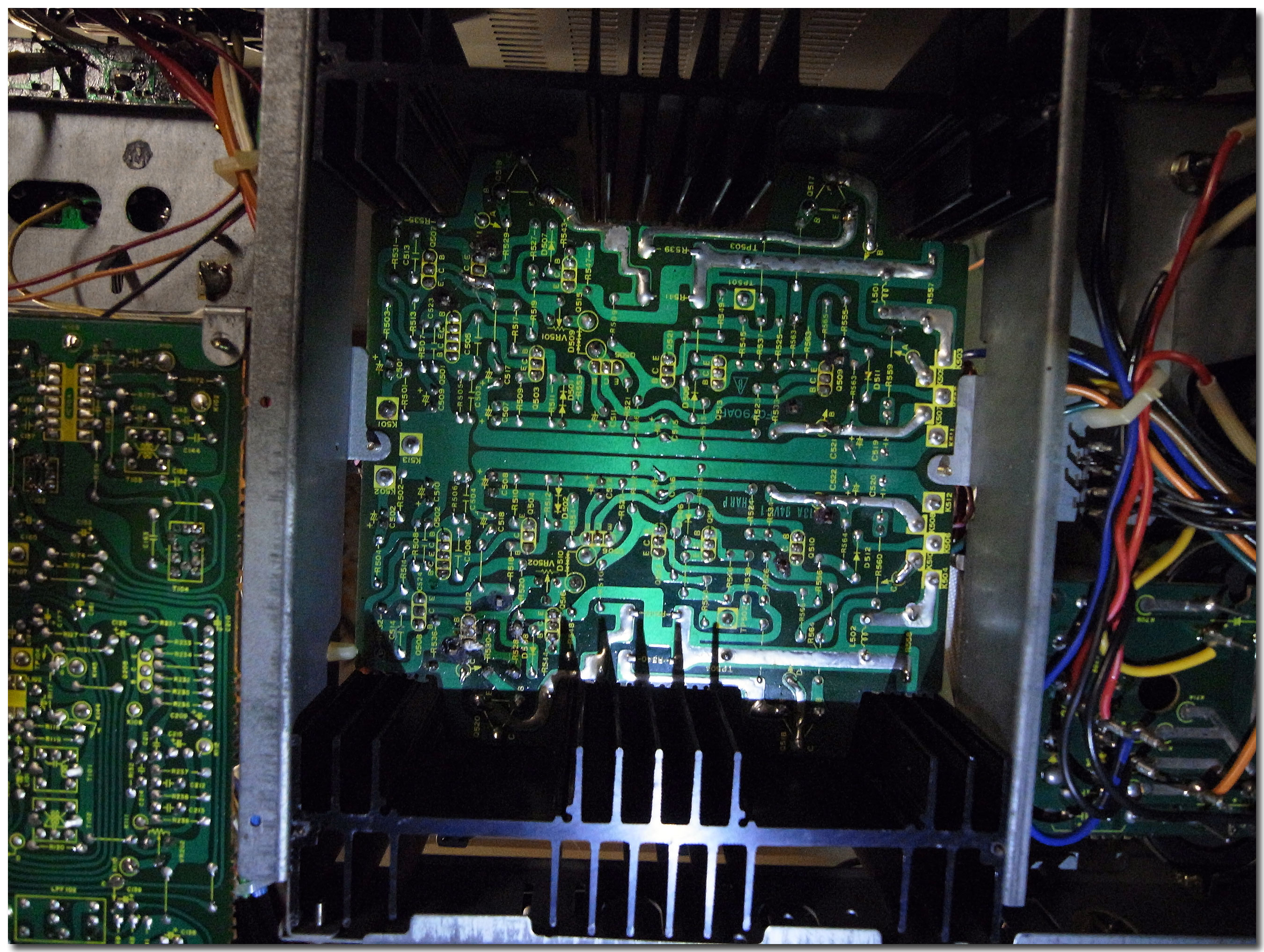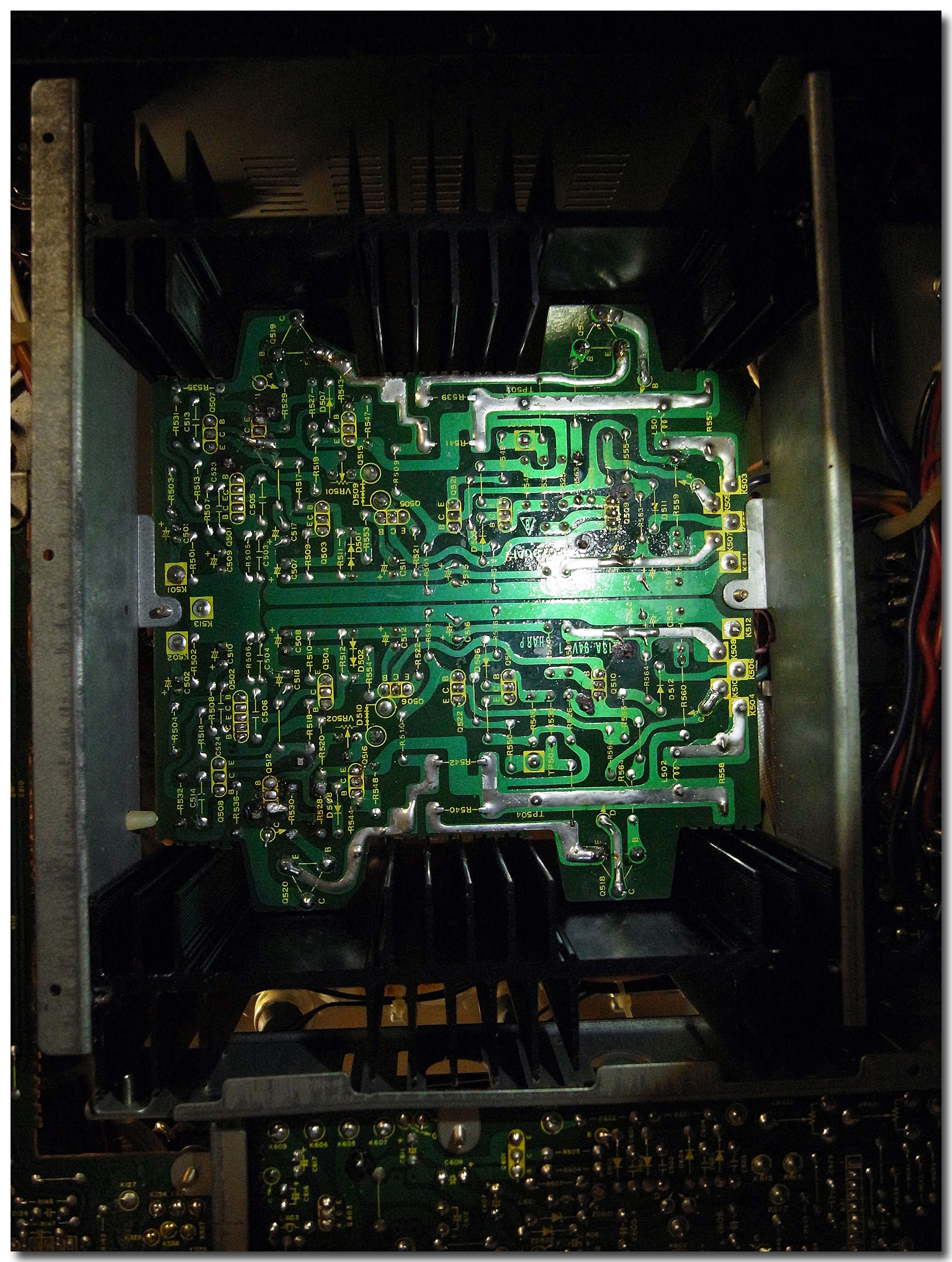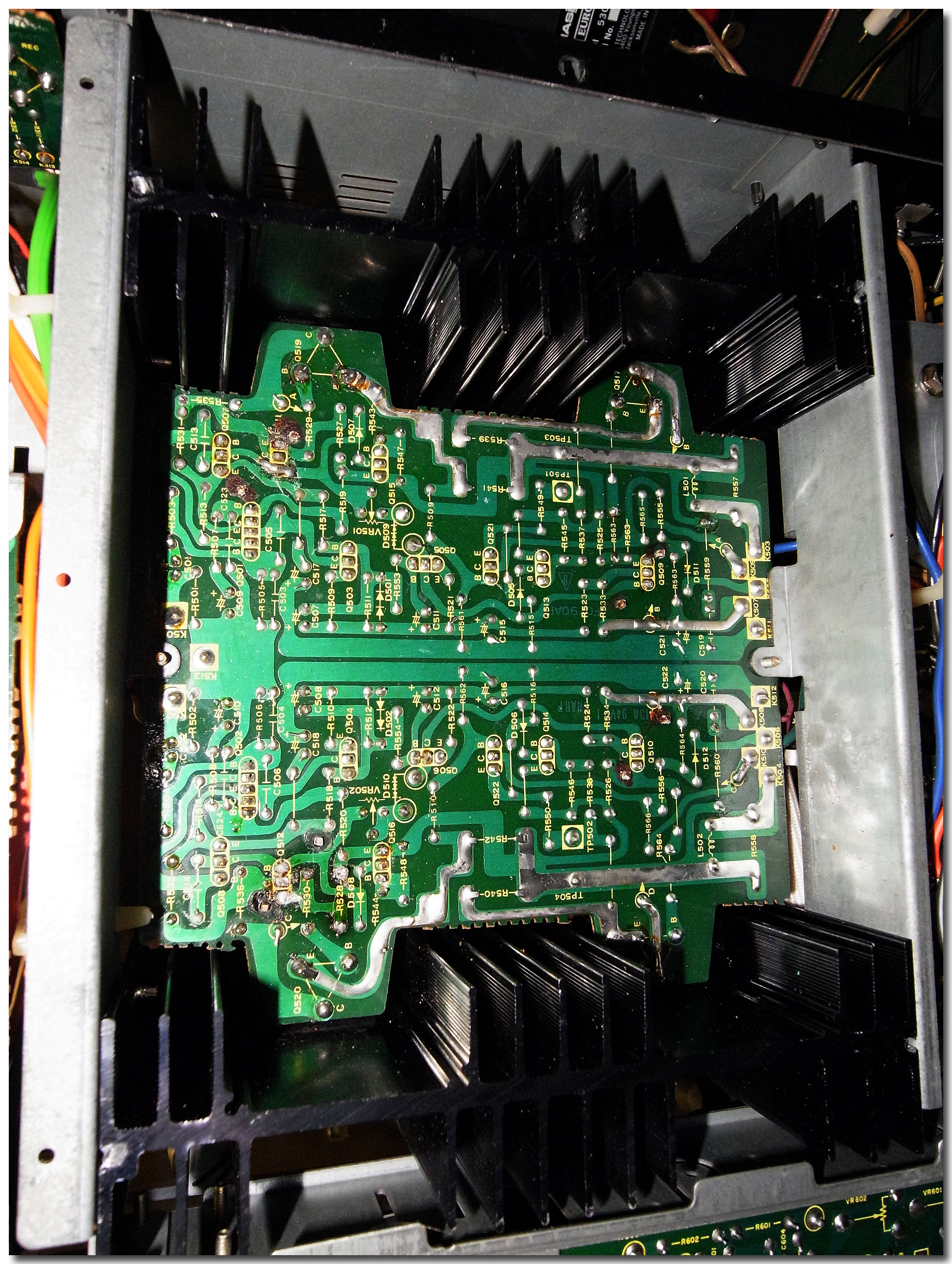Krosya
Well-Known Member
Hi,
I'm hoping someone can point me in a right direction here. My Optonica SA - 2605 developed a distortion in a left channel. I almost cant hear at lower volumes, but starting about 1/3 up the volume dial and higher it becomes pretty obvious. Right channel is clean and clear. It's there with ANY source - tuner, tape, Aux, phono. I cannot hear it via the Headphones, just speakers. Tested with several different speakers, same result. All switches and button and dials were treated with the DeOxit, and I dont notice any other issues.
I took the top cover off and one thing I noticed - is that 2 transistors? (I think thats what they are) - I have them circled in a photos below are getting much hotter than any others on a board.
While I'm pretty good with the mechanical stuff, and can do some basic soldering, I dont know much about the electronics, so please explain things to me in a way so I can understand - like to a 3 year old.
Hope someone can help me out . If you need more info - please let me know.
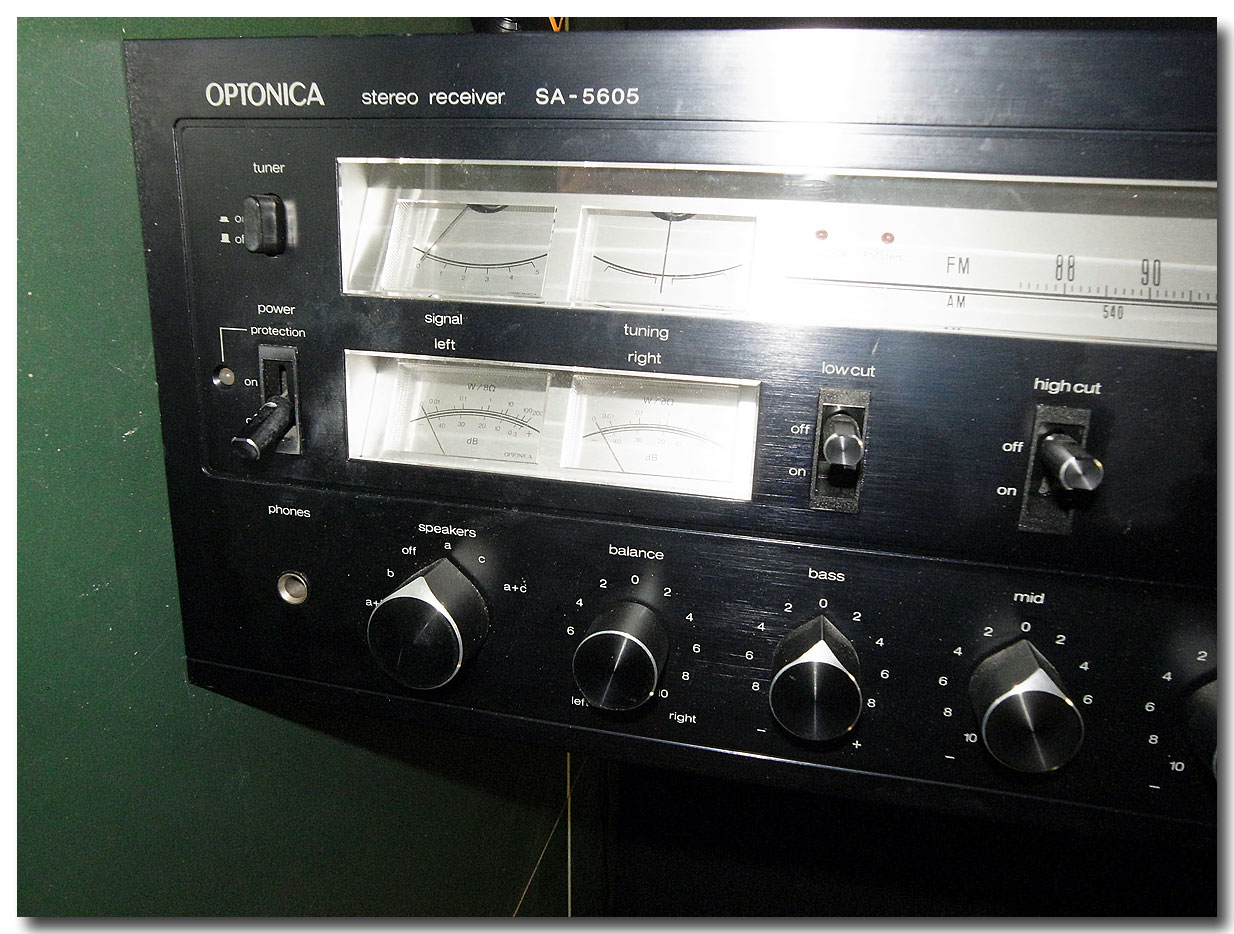
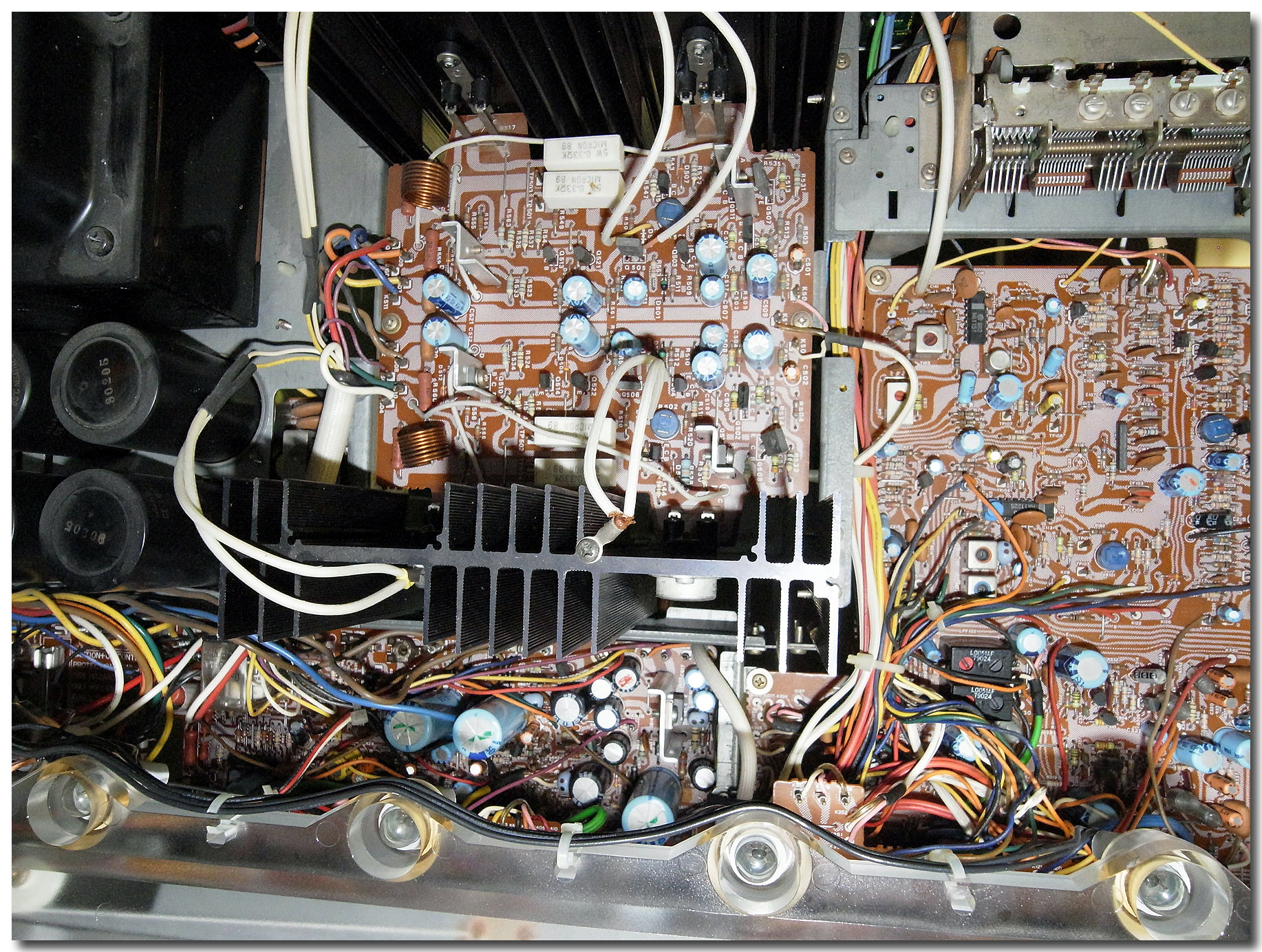
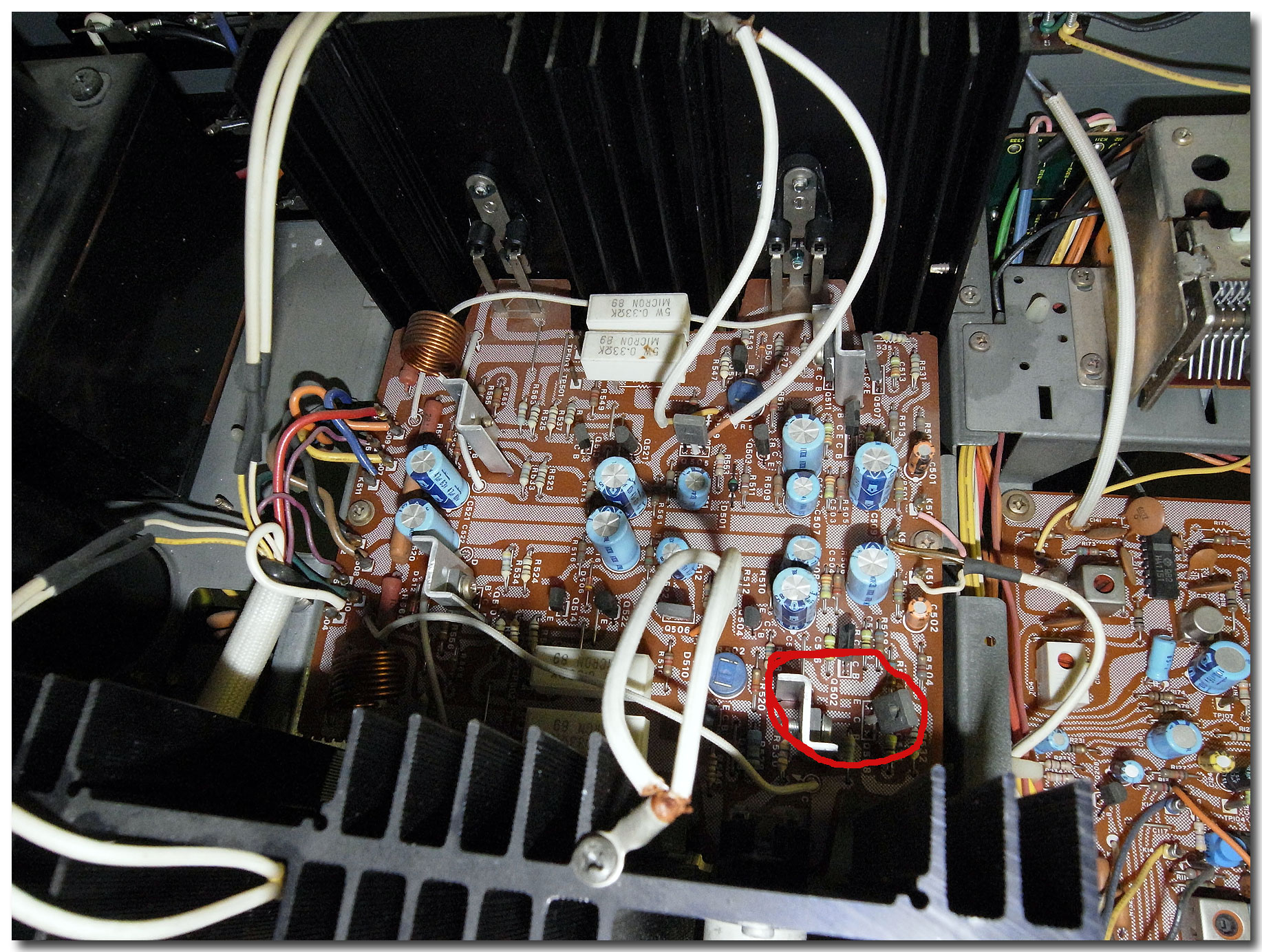
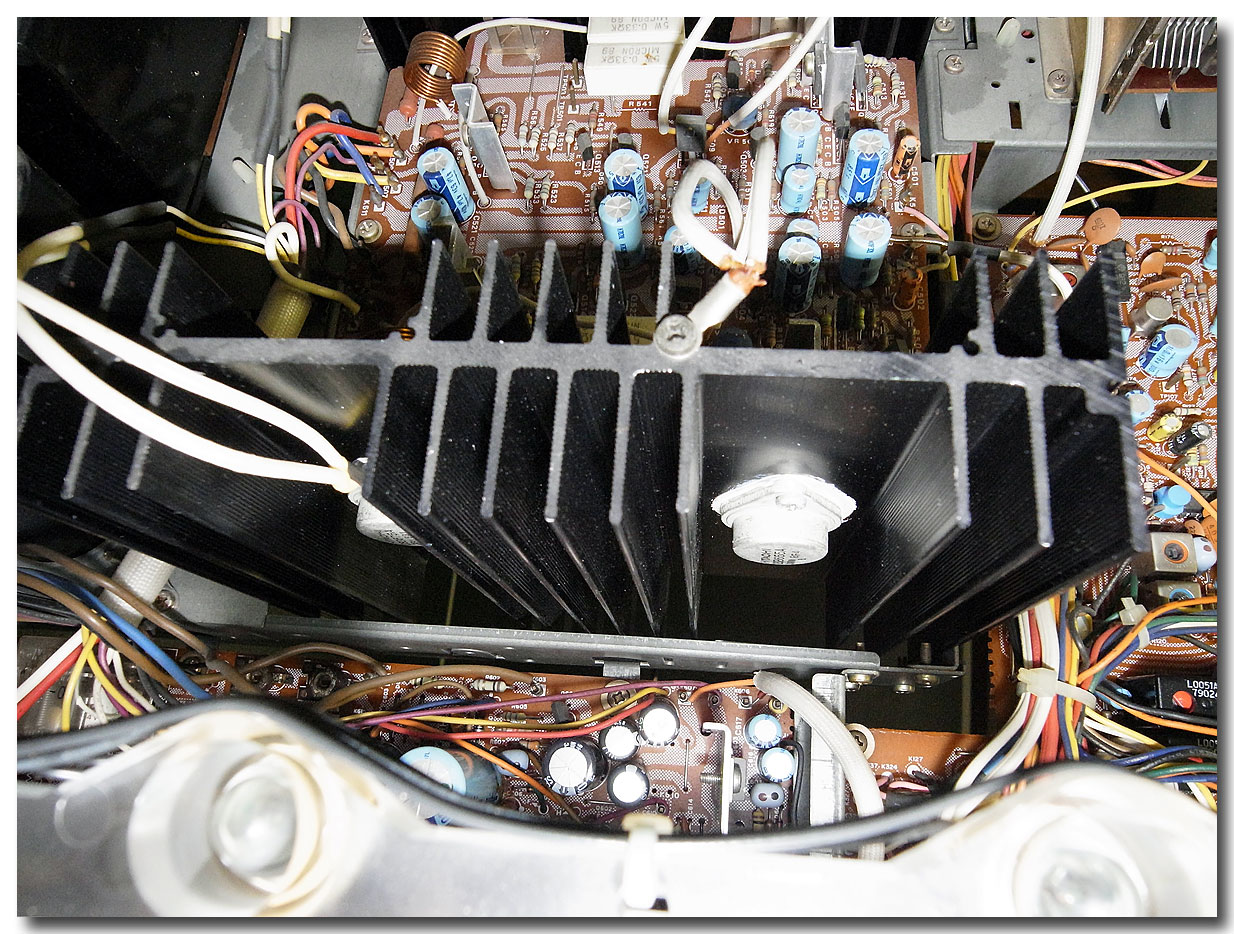
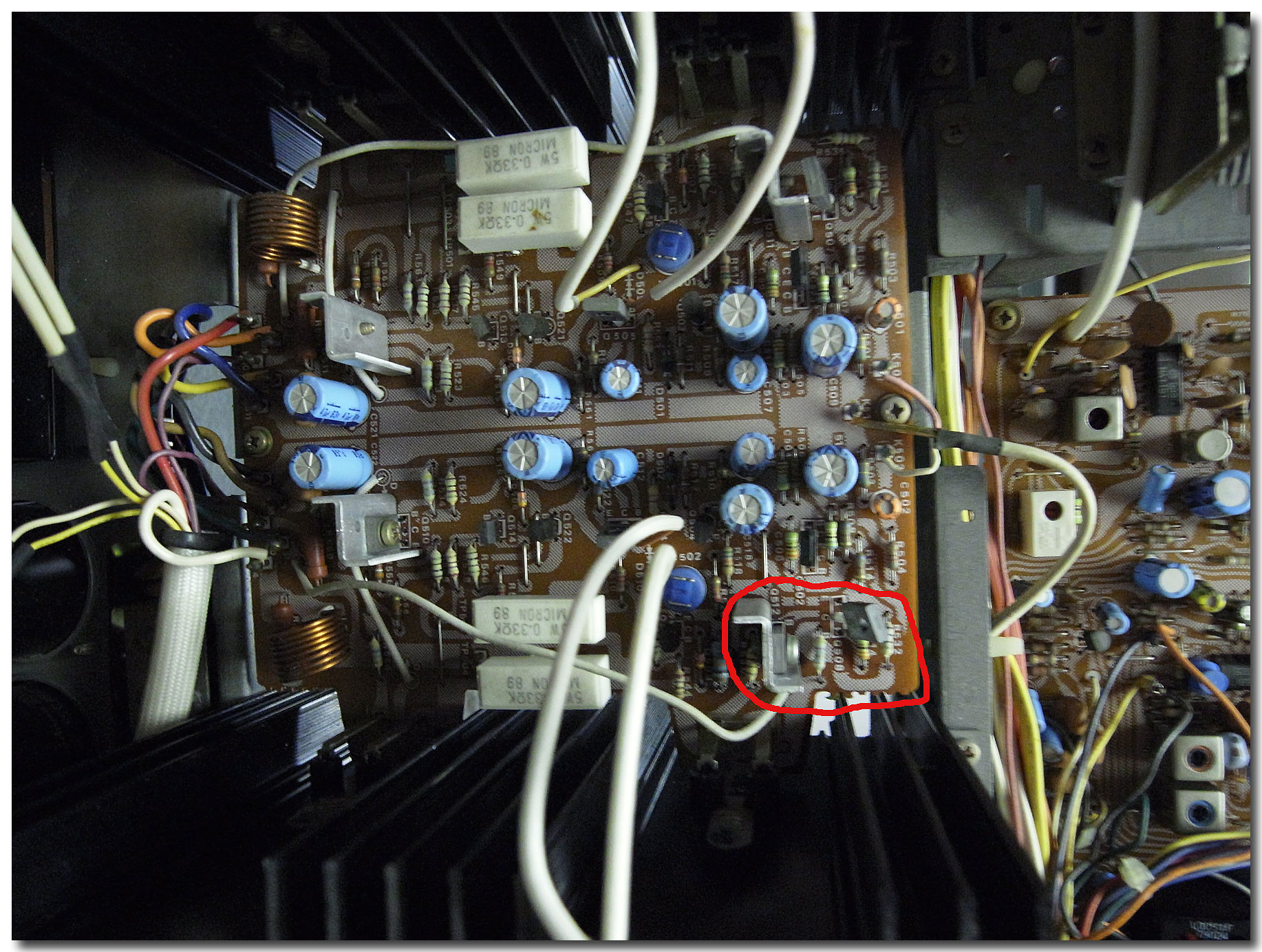
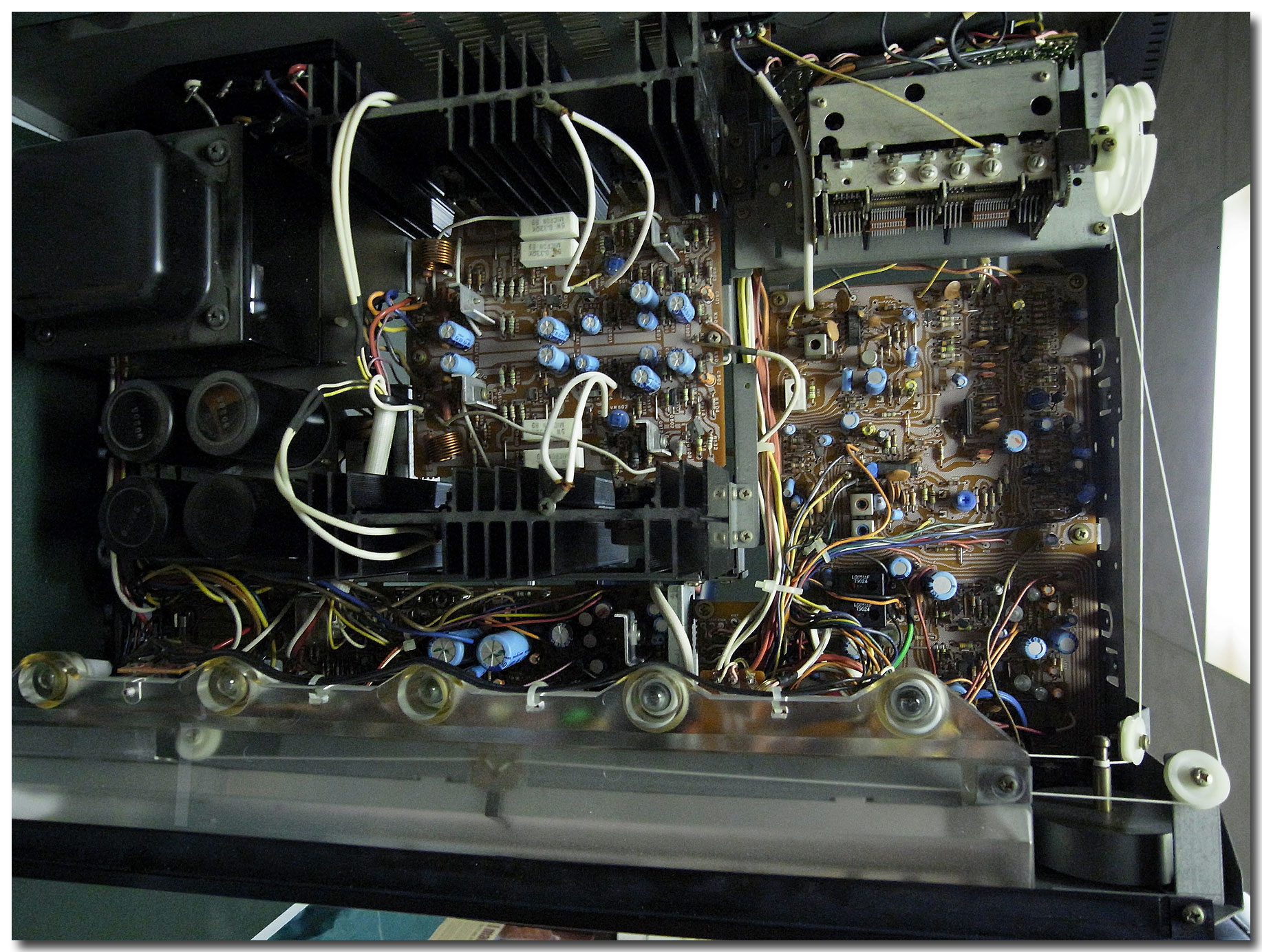
Thank you in advance
I'm hoping someone can point me in a right direction here. My Optonica SA - 2605 developed a distortion in a left channel. I almost cant hear at lower volumes, but starting about 1/3 up the volume dial and higher it becomes pretty obvious. Right channel is clean and clear. It's there with ANY source - tuner, tape, Aux, phono. I cannot hear it via the Headphones, just speakers. Tested with several different speakers, same result. All switches and button and dials were treated with the DeOxit, and I dont notice any other issues.
I took the top cover off and one thing I noticed - is that 2 transistors? (I think thats what they are) - I have them circled in a photos below are getting much hotter than any others on a board.
While I'm pretty good with the mechanical stuff, and can do some basic soldering, I dont know much about the electronics, so please explain things to me in a way so I can understand - like to a 3 year old.
Hope someone can help me out . If you need more info - please let me know.






Thank you in advance




